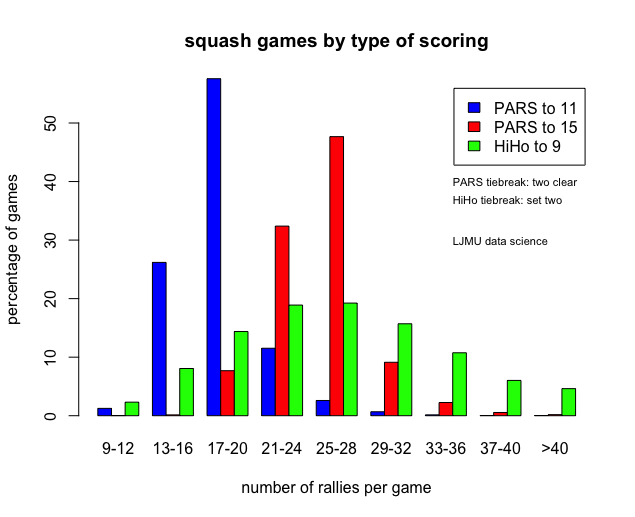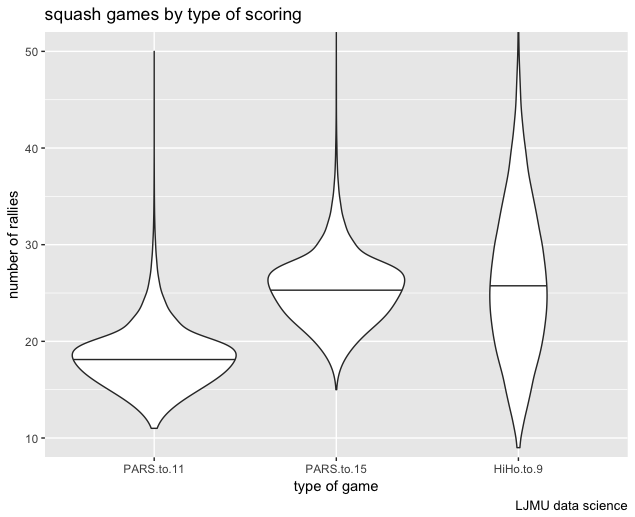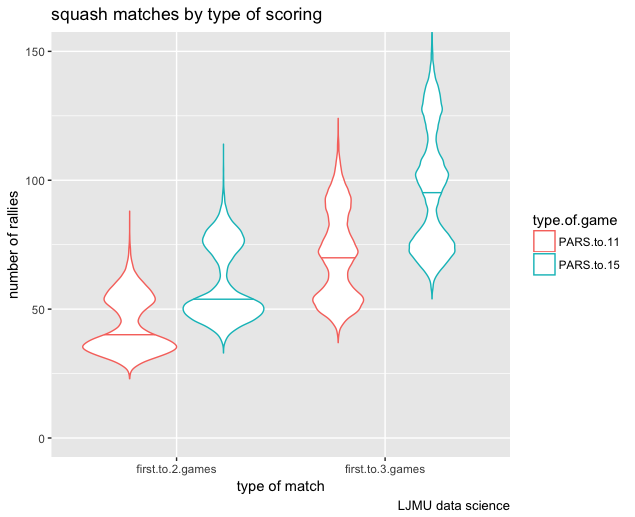

Three different scoring systems in squash have been in common use:
Historically: For the World Championships: HiHo to 9 was used until 1988; PARS to 15 from 1989 to 2003; and PARS to 11 from 2004. For the British Open: HiHo to 9 was used until 1994; PARS to 15 from 1995 to 2003; and PARS to 11 from 2004.
Relevance to data science: This is in order to compare the number of rallies in a traditional game with PARS games. There are no large databases containing the number of rallies in traditional games, we can instead use simulations. Taking closely-matched players, where the higher-ranked player has a 50% to 60% chance of winning each rally, we can simulate thousands of games with the number of rallies recorded.
The following plots show the distribution of the number of rallies in each game using bar charts and using violin plots.


Now you can see why there was a switch to PARS. The number of rallies in a traditional game varies enormously even if the probability of winning a rally while serving or receiving is the same (as in these simulations). PARS to 15 has nearly the same average number of rallies as HiHo to 9 but less variation. The professional players switched to PARS to 11 because of long rallies and in order to increase the intensity for viewers. PARS to 15 is still used in many amateur county leagues in England and elsewhere. There are also a few holdouts for the traditional scoring.
The following plot shows how many rallies are expected in a match for both 'first to two games' (called 'best of three' usually), and 'first to three games' (called 'best of five' usually).

Analysis and page by Ivan Baldry, programme leader for MSc Data Science at LJMU.